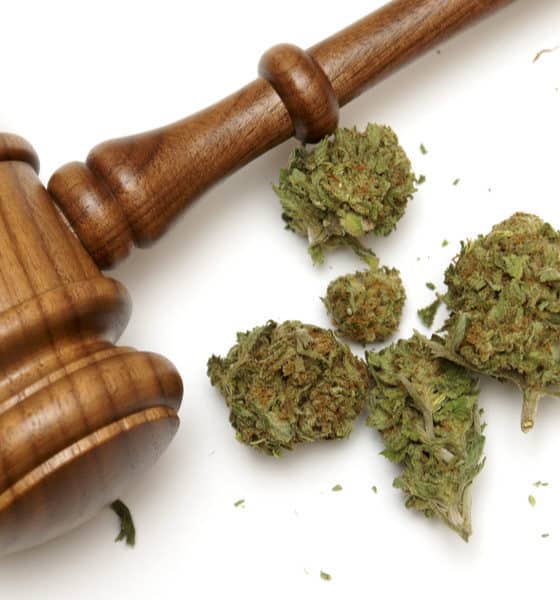Good morning.
(Want to get California Today by email? Here’s the sign-up.)
“Sell off!” “Crash!” Investors bracing for “uncertainty.”
After plummeting early this week, Wall Street rallied on Tuesday, recovering some, but not all, of what had been lost. What implications does the drop have specifically for California?
In an interview on Tuesday afternoon, Annette Vissing-Jorgensen, a professor of finance at the University of California, Berkeley’s Haas School of Business, put the market decline in context for the Golden State.
Here are some things to keep in mind:
The market’s impact on capital gains – and the state budget
When the stock market goes down, the amount of money Californians who sell stock must pay in capital gains taxes also decreases. The state’s tax code is very progressive, which, in this case, Dr. Vissing-Jorgensen said, compounds the problem.
California has one of the highest top tax brackets in the country, and the state relies heavily on those top earners to fill its coffers. (In 2014, the top 1 percent of earners paid 48 percent of all state income taxes in California, according to a 2016 article in the Economist.)
Continue reading the main story
ADVERTISEMENT
Continue reading the main story
“Since the top 1 percent of Californians own a lot of stocks, a stock market decline that results in lower capital gains could have a disproportionately large impact on California – and its state budget,” Dr. Vissing-Jorgensen said.
We have a lot of tech companies in California – and their stocks tend to feel the impact of market movement more acutely
Tech companies like, say, Apple, tend to sell products known as “consumer durables” – products like an iPhone that do not have to be bought frequently because they last for a long time. When people are feeling strapped, they tend to cut back on buying those types of products.
Those companies tend to be “high beta,” Dr. Vissing-Jorgensen said, meaning that tech stocks move more than “one for one” with the stock market. Companies like Apple, she said, have a beta above one, meaning that a 10 percent drop in the market tends to be associated with a larger than 10 percent drop in their stock prices.
“The industry composition of our businesses matters because some industries like tech are more affected by the underlying economic drivers of the stock market decline,” Dr. Vissing-Jorgensen said.
The big picture
All that said, Dr. Vissing-Jorgensen urged people to keep things in perspective.
“The stock market has declined, but it’s a pretty modest decline compared to how much the run up has been,” she said. “It’s now basically flat for this year, but it still went up a huge amount last year.”
Newsletter Sign Up
Continue reading the main story
California Today
The news and stories that matter to Californians (and anyone else interested in the state). Sign up to get it by email.
Sign Up
You agree to receive occasional updates and special offers for The New York Times's products and services.
- SEE SAMPLE
- PRIVACY POLICY
- OPT OUT OR CONTACT US ANYTIME
TODAY IN LAS VEGAS, NVUpdate Location
Plenty of sunshine
50°F 70° 49°
TOMORROW: 75° 50°
California Online
(Please note: We regularly highlight articles on news sites that have limited access for nonsubscribers.)
Photo
Patrick Soon-Shiong CreditKevork Djansezian/Getty Images
• The billionaire Los Angeles doctor Patrick Soon-Shiong is close to buying The Los Angeles Times from its parent company Tronc in a $500 million deal that would happen as early as Wednesday. The move follows months of turmoil at the paper. [The New York Times]
• Elon Musk’s SpaceX company launched the world’s most powerful rocket, with a Tesla sports car as payload, into space. [The New York Times]
• But editorial writers are turning their attention to Mr. Musk’s other pursuits, blasting his sale of thousands of flamethrowers and calling him a “self-centered child in a grownup’s body.” [Mercury News and East Bay Times]
Photo
Activists in San Francisco calling for the removal of Judge Aaron Persky. CreditEric Risberg/Associated Press
• New polls show that a majority of voters are not looking favorably at a pair of Southern California Republicans. This could spell bad news for their colleagues in the rest of the state. [San Francisco Chronicle]
• The Los Angeles County district attorney is not planning to follow her counterparts in San Francisco and San Diego, who are dismissing thousands of marijuana convictions. [KQED]
• The Southern Poverty Law Center has identified 13 “alt-right killers” whose actions have left 43 people dead. Among them was Elliot Rodger, who killed six people in the college town of Isla Vista in 2014. [The Los Angeles Times]
Photo
Students at the University of California, Santa Barbara attended a vigil after a 2014 shooting in Isla Vista.CreditJonathan Alcorn/Reuters
• San Francisco could open a pair of safe injection sites as early as July 1, making it the first city in the nation with clinics that allow drug users to shoot up with supervision. The method is controversial, but cities from Seattle to Baltimore are examining their own sites. [San Francisco Chronicle]
• The Olympics begin Friday. These are the California athletes to watch. [Sacramento Bee]
• The Girl Scouts aren’t sure what to do with a 9-year-old who sold 312 boxes of cookies outside a pot shop. Urbn Leaf was apparently not on the approved cookie booth list. [San Diego Union-Tribune]
And Finally ...
The year was 1968, and California-born Peggy Fleming took to the ice at the Stade de Glace in Grenoble, France — a 19-year-old with a shot at Olympic gold. Just a few years before, a plane crash had killed the entire American figure skating delegation, wiping out a generation of top skaters.
Deafening applause rolled through the rafters, according to coverage in The New York Times. Ms. Fleming wore chartreuse. Rhinestone glittered under the lights.
Peggy Fleming - America's Golden Girl | Grenoble 1968 Winter Olympics Video by Olympic
“Here they were, one after another—the double loop, the double axel, the Wally jump, the ballet jump, another Wally, the flying camel and the double lutz,” wrote our reporter. “Peggy was nearing the end now—her skates flowing onto the ice and there suddenly was the finale—a half-toe loop, one-and-a-half toe loop, then a double-toe loop, perfectly conceived, perfectly executed.”
Ms. Fleming took home the nation’s only gold medal in that Olympics, and her victory became a global symbol of the resurgence of U.S. figure skating.















